|
Author
|
Topic: Regular 8mm Sound???
|
|
|
|
|
|
|
|
|
|
|
|
|
Clive Casey
Expert Film Handler
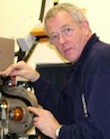
Posts: 112
From: Barrow-in-Furness, UK
Registered: Dec 2017
|
 posted January 11, 2018 11:53 AM
posted January 11, 2018 11:53 AM



When I started with 8mm back in the 60s, I used to hire standard 8mm films from a library called Filmland, I think it was based in London. Derann took Filmland over so I used to hire standard 8 from Derek. I went to the shop in the 60s, It was on Stourbridge Road then. In the back room they had a 16mm projector set up with a flexible drive running to 2 8mm machines to transfer the sound.
Super 8 came out and Derann started super 8 as well as standard 8. If my memory serves me correct, they had a lot of trouble in the early days with scratching. I think this was due to the early projectors not having a feed sprocket. I think Derann nearly pulled out of super 8 and concentrated on standard 8, but I could be wrong, as they certainly went into super 8 in a big way later on. Those were the days, what a shame they are probably gone forever.
Regards to all,
Clive
| IP: Logged
|
|
|
|
|
|
|
|
|
|
|
|
|
|
|
|
|
|
|
|
Charles Peich
Junior
Posts: 11
From: Geneva, IL, USA
Registered: Jun 2013
|
 posted January 14, 2018 09:42 AM
posted January 14, 2018 09:42 AM




Buck, congratulations on owning the Movie-Mite/Calvin, Cirse and Fairchild Reg 8 magnetic sound projectors! I have the Fairchild projector in my collection. Actually, when I was a kid I had the Fairchild system - camera and projector. I also had some Castle Films Reg 8 sound films. They were the Reg 8 versions of Castle's 16mm sound films, the ones that were on the 400ft 16mm reels.
Some time ago while researching the history of 16mm mag sound, I ran across this article about the Movie-Mite / Calvin 8mm mag projector. The one you have. I do recall seeing this projector at the Calvin facility in Kansas City, MO.
This article was published in August 1952 and was written by the Chief Engineer of Movie-Mite. I believe this was the 1st Reg 8 mag sound projector with playback and recording abilities designed from the ground up to make it to the market in the USA. Or, at least the 1st with a large reel capacity.
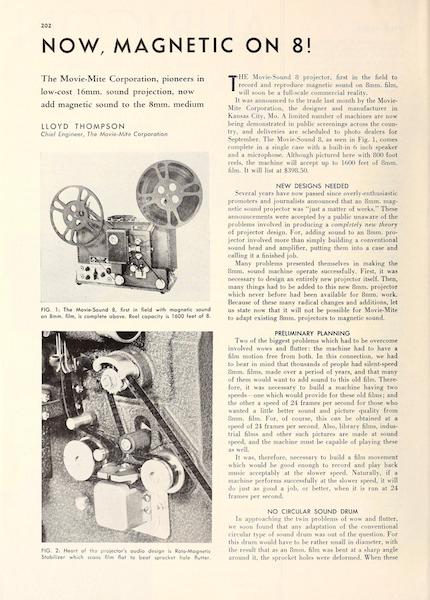
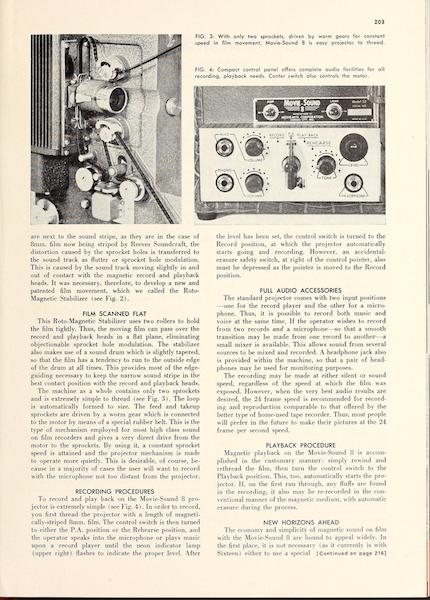
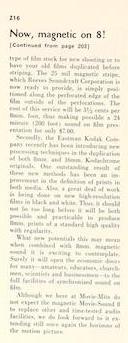
Forum, if these pics don't enlarge well enough to read, PM me and I'll send you my original files.
Or, this is the link to the article:
https://archive.org/details/moviemakers27amat
go to page 202.
--------------------
Charlie
| IP: Logged
|
|
Tom Photiou
Film God
Posts: 4837
From: Plymouth U.K
Registered: Dec 2003
|
 posted January 14, 2018 10:00 AM
posted January 14, 2018 10:00 AM



Have to say Robert, my Brother bought an 810D HQS back in 74, no problems with loading standard 8 but we did have awful trouble with the machine slowing down to a virtual stand still halfway through a reel, it was sent back to Hendersons time and time again. In the end the guy in the shop we bought it in Plymouth told us to take it back in so he could see the fault himself, after at least four returns from the warranty repair, (a six week wait with each return), the local shop guy finally saw the fault, sent it off, and guess what? It came back with same fault!!!
They eventually gave us a new machine, in this day and age we wouldn't have to wait for such poor service before it was put right but it did put me off Eumigs for life. My Brother swears by them, and i do admit they are very kind to film and do have excellent sound quality, if you can put up with the hum.
Standard 8 films is what we started on but never had that many sound films, a couple of features and a couple of L & Hardys and a few other shorts but thats it. The image quality was always very good as was the sound. One of our feature films was a Robert Stack western called Great day in the morning, the image was unbelievable, it looked like a Technicolour film, it was that good, regretfully the sound sound was awful and muffled in places, never seen this film for sale since. ![[Wink]](wink.gif)
| IP: Logged
|
|
|
|
|
|
|
|
|
|
|
|
|
|
|
|
|



 UBBFriend: Email this page to someone!
UBBFriend: Email this page to someone!
 Printer-friendly view of this topic
Printer-friendly view of this topic










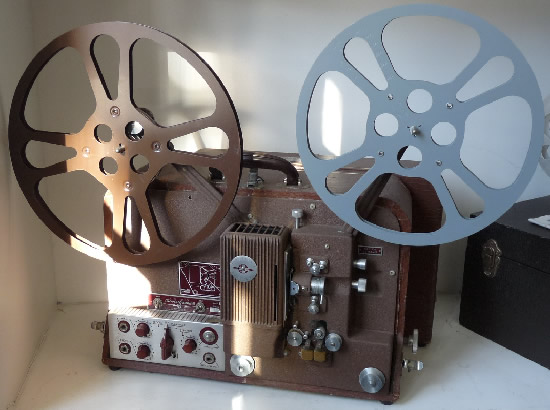

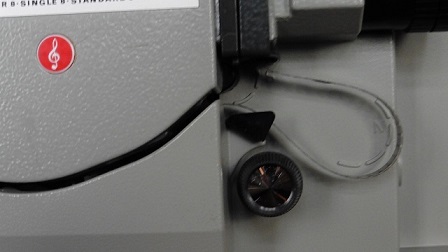
![[Smile]](smile.gif)



![[Wink]](wink.gif)



